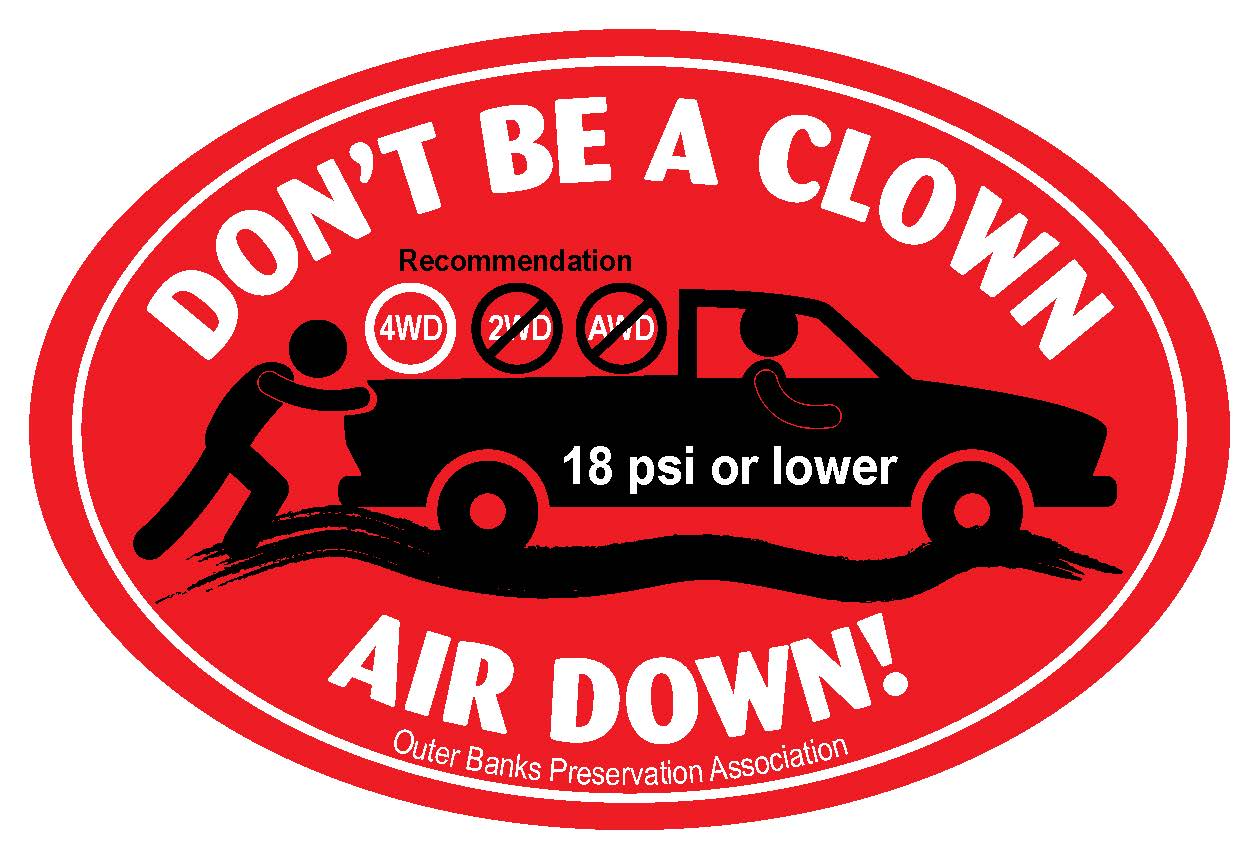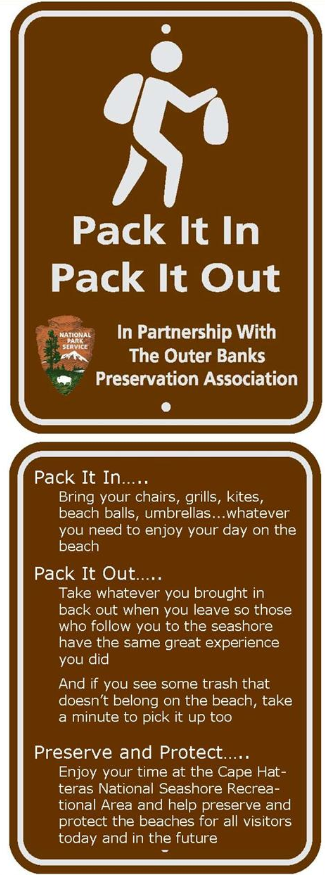NPS EA – Review & Adjustment of Wildlife Protection Buffers
The National Park Service has requested public input on the proposed action to modify wildlife buffers and establish corridors. We are requesting your participation either in person, via letter or both. Written comments must be delivered or postmarked no later than May 14, 2015. Email comments can be entered @ https://parkplanning.nps.gov/commentForm.cfm?documentID=65752. This is your opportunity to make a statement regarding changes to the ORV Management Plan as currently administered at Cape Hatteras National Seashore Recreational Area. A great deal of time & effort has gone into bringing about this opportunity required by the passage of Section 3057 of the Defense Authorization Act – 2015. This act requires NPS “to insure that the buffers are of the shortest duration and cover the smallest area necessary to protect a species…..” and your comments, to be considered, need to be directed to this end.
You can view the the NPS Environmental Assessment, CHAPA’s proposed changes and The NC Wildlife Resources Commission recommendations plus the dates, times & locations of public meetings @ www.OBPA-nc.org, or www.ncbbaonline.com or www.islandfreepress.org.
Following are some primary points of interest for you to consider as you prepare your comments:
General Statements – Overall Assessment
- Buffers and Corridors proposed shall not be contingent upon NPS having the resources (funding and staff) to do the monitoring required. Fiscal budgeting must insure the availability of these resources.
- If chick movements (regardless of species) requires changes in buffer location, the buffer perimeter should move accordingly and not be merely enlarged. Natural barriers, (ie. dunes & ponds) should be a limiting factor in buffer delineations.
- Access closures at the spits & points determined by the collective impact of PIPL, AMOY, and CWB. Actual changes to pedestrian or ORV access if the resource management procedures followed for AMOY and CWB imposes restrictions override the positive changes proposed to PIPL buffers.
American Oyster Catchers/AMOY
- Pre-nesting closures - should not be required with robust monitoring efforts that detect nests soon after eggs are laid. Visitors should expect restrictions the same as over the past 6 years.
- Nesting buffers – Buffers to remain unchanged at 150m. An ORV corridor at a minimum of 25m from a nest is proposed by NPS. Overall – POSITIVE.
- Unfledged chicks’ buffers – NPS proposes no change (200m) & no ORV corridors, unchanged compared to last 6 years. UNCHANGED. NPS chose to ignore NCWRC recommendations which could have resulted in a positive impact.
- Removal of closures – NPS proposes no changes (the later of Jul 31or 2 weeks after chicks have fledged) the definition of fledged is 45 days after hatched. – UNCHANGED. NPS chose to ignore NCWRC recommendations which could have resulted in a positive impact.
- Overall – the positive effect of providing a corridor during nesting is welcomed but changes to size & duration with regard to fulfilling the requirements of the new law are basically – NEGATIVE TO MINOR POSITIVE.
Colonial Water Birds
- Pre-Nesting Closures – No changes are proposed to current procedures. The likelihood that pre-nesting closures will impact visitors will be entirely dependent on where the closures are established in March of each year; visitors should expect their experience to be affected by pre-nesting closures in the same way they have experienced over the past six years-UNCHANGED.
- Nesting Buffers / Un-Fledged Chicks’ Buffers –Nesting buffers for least terns are proposed to be reduced from 200m to 100m; buffers for other CWB are proposed to be reduced from 200m to 180m. These changes are viewed as inconsequential; the impact to access compared to the past six years is UNCHANGED. NPS chose not to use NCWRC proposals which are less restrictive and which would likely result in a positive impact to access.
- Isolated nests- Nest/s not located near or within a colony receive the same level of protection as does a colony increasing the risk of significant & unwarranted closures – UNCHANGED.
- Removal of closures – NPS proposes no changes (the later of Jul 31, Aug 15 for black skimmers or 2 weeks after chicks fledge) – UNCHANGED.
- Overall – NPS proposed changes to the size of closures and duration of closures are inconsequential and therefore do not fulfill the requirements of the new law – NEGATIVE.
Piping Plover(PPL)/Wilson’s Plover(WIPL)
- Location -Resource management procedures apply wherever PIPL nesting activity occurs. PIPL activity has occurred at Cape Point, South Point, and on the Ocracoke side of Hatteras Inlet. Any changes where PIPL closures occur will be determined by where PIPL decide to nest. Impact of proposed changes on the location of PIPL closures - UNCHANGED.
- Pre-Nesting Closures – No changes are proposed to current procedures. The likelihood that pre-nesting closures will impact visitors will be entirely dependent on where the closures are established in March of each year; the visitor experience is likely to be the same they have experienced over the past six years - UNCHANGED.
- Nesting Buffers – Nesting buffers are proposed to be reduced from 75m to 50m. Risk that pedestrian and ORV restrictions will affect the visitor experience - IMPROVED.
- Removals of Closures– No changes are proposed to the procedures currently in place. Closures will be removed the later of July 31 or two weeks after the chicks have fledged. Impact on access of removal of closures -UNCHANGED & unacceptable.
- Unfledged chicks’- ORV buffers are proposed to be reduced from 1000m to 500m. Pedestrian buffers are proposed to be reduced from 300m to 100m. An ORV only corridor located 200m from the unfledged chicks in situations where the 500m buffer is not available is proposed. Reduction in buffer sizes and the provision of an ORV corridor will potentially increase access from levels experienced over the last six years - IMPROVED.
- Size of closures – NPS proposal will likely reduce the size of closures (dependent upon AMOY and CWB activity) - IMPROVED.
- Duration of closures – NPS proposal will not reduce the duration of access closures with regard to fulfilling the requirements of the new law – NEGATIVE.
Sea Turtles
- Incubation closures – 10m X 10m symbolic fencing is UNCHANGED.
- Nest relocations – NPS proposal does not provide for nest relocations. When a sea turtle nest blocks access to an ORV area and no other way around the nest exists, the nest should be relocated to a vehicle free area.
- Hatch Window Closures – Closures are expanded when activity is detected in the nest or when the age of the nest approaches the expected hatch date. NPS recommends five changes, all of which will reduce the size and duration of closures which have been experienced over the past six years. All are viewed as VERY POSITIVE.
- Hatch window buffer expansion will be installed on Day 60 instead of Day 55.
- Buffers on either side of the nest will be reduced from 52.5m to 15m consistent with NCWRC guidelines and CHAPA proposals.
- Buffer behind the nest will be reduced from 15m to 5m minimum consistent with NCWRC guidelines and CHAPA proposals. Change will in many cases allow an ORV bypass behind the nest to continue to exist during the hatch window.
- NCWRC procedure to allow daytime driving in front of nests which are within the hatch window if resources exist to monitor the nest and remove ruts before the end of the day when other access options are not available will be adopted.
- Special Consideration for Nests Laid after August 19 – NPS has determined that sea turtle nests laid after August 19 are typically unsuccessful at the seashore due to the colder fall weather conditions. Accordingly, NPS proposes that the 10m x 10m nest incubation closures for nest laid after August 19 should not be expanded unless activity is detected in the nest. This change will significantly reduce the size and duration of closures experienced after October 19 of each year.
- POST September 15 Night Driving Buffer – No changes are proposed to the ORV night time buffer of one half mile which is currently instituted beginning September 15 when night driving restrictions are listed. This distance is prescribed in order to avoid the risk of lights distracting the hatchlings as they leave the nest and move to the water. This procedure will continue to restrict nighttime access between September 15 and October 19 after other proposals describe above are implemented. NPS should adopt the use of light penetration barriers sufficient to mitigate this risk and which would therefore allow driving to within 15 meters on each side of the nest.


